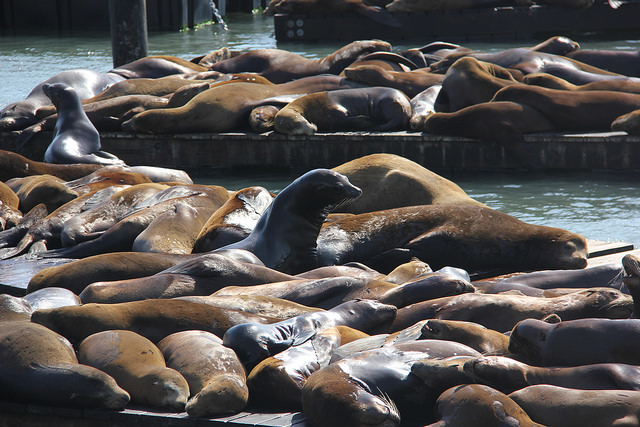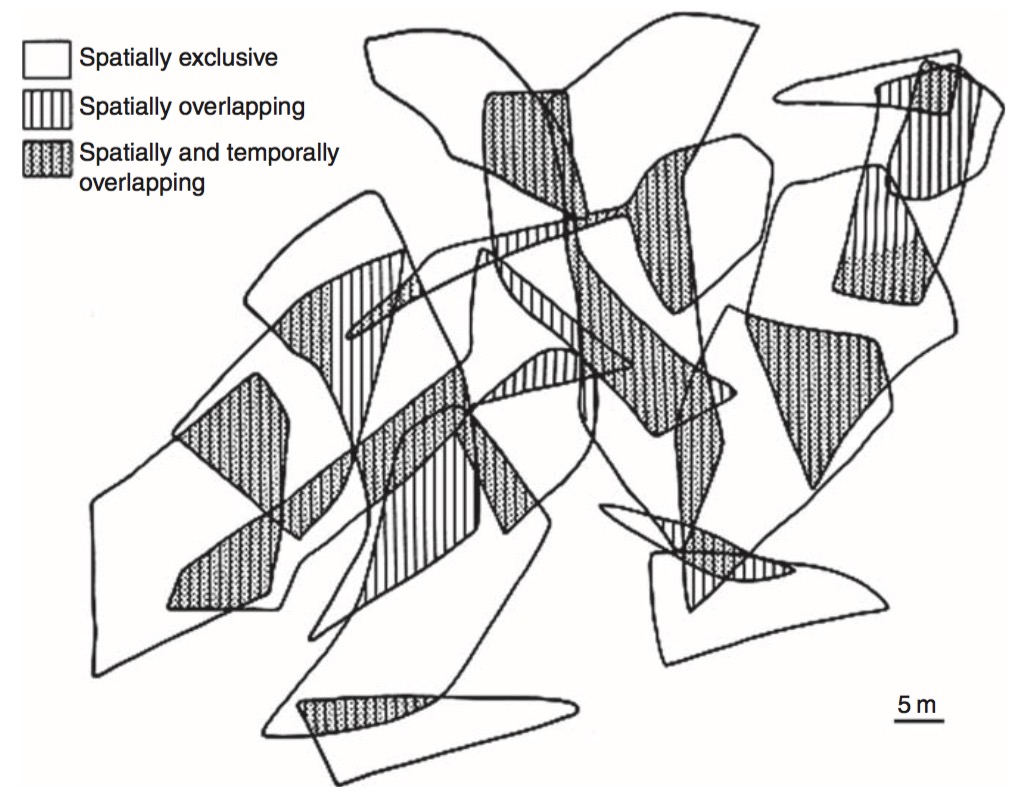Territorial Behavior in Pinnipeds
Biology 342 Fall 2015
Denis Ivanov, Stephanie Opiyo
Overview
Pinnipeds
Pinnipeds (from the latin pinnas, meaning feather, and ped, meaning foot) are a monophyletic clade of marine mammals including seals, sea lions, fur seals, and walruses. This clade is commonly understood to share a common ancestor with mustelids (weasels, raccoons, etc), canids (dogs, wolves, foxes, etc) and ursids (bears) (Higdon, Bininda-Emonds et al. 2007). Distinctive features include their flippered, shortened limbs that are used for locomotion both in and out of the water (as opposed to cetaceans and sirenians, which have vestigial hind limbs and swim using their tails); their tendency to “haul out” onto dry land (or at the very least, a dock or ice floe) to thermoregulate, rest, breed, or molt (whereas a cetacean on dry land is likely to die if it is not returned to the ocean as soon as possible) (Berta 2009), and their distinctive vocalizations including barks, growls, roars, and grunts.

Image: California Sea Lions (Zalophus californianus) basking on the docks at Pier 39 in San Francisco, CA. (Photo from Flickr user Laika ac)
Territoriality
Territoriality is defined as “the exclusive use of fixed space, which entails obtaining, defending, or advertising occupancy of the space” (Miller, 2009).
Territoriality is not typically common of marine mammals as a whole but is common in pinnipeds. Territoriality in pinnipeds is solely a mating behavior and often does not occur when pressure to mate is absent (Miller, 2009). This territoriality can also be linked to a primary factor that differentiates pinnipeds from cetaceans, sirenians, and sea otters: the fact that they breed on land as opposed to at sea. This “shore leave” represents the most common time at which territorial behavior emerges, as the amount of space available on land is, rather obviously, much less than the amount available at sea. Despite that, it is also important to note that, in a few species of phocid, males hold what are known as “maritories” (literally: marine territories), which are aquatic territories near where the females will haul out to raise pups. These territories are held by constant vocal and visual displays on the behalf of the male (Miller 2009).
Video: Segment from a Sir David Attenborough special detailing the breeding season for elephant seals (Mirounga spp.)
Since pinnipeds tend to live in large communities of individuals within their species, their territories are markedly different in comparison to _adjective_ animal territories in which there are set spaces of ownership of the animals that typically are more *compartmental* and tend to overlap less. Male pinniped spacial arrangements of claimed space used during breeding overlap do not seem to have a uniform shape between individuals. These claimed spaces appear to be territories however, they are instead arranged based less on competition for the land as a resource itself, and more based on the availability and attendance of females that are ready to mate in certain areas (Figure 1).

Figure 1) Male gray seal breeding ground territories (Territorial Behavior, Edward H. Miller)